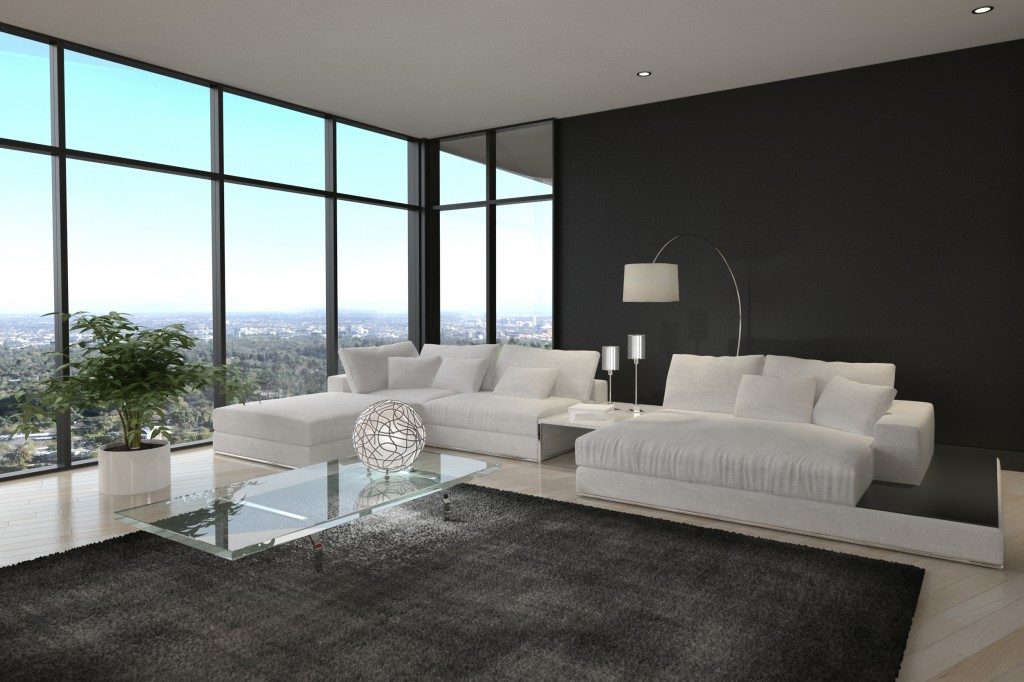Black is a rich and complex color. Unlike red, with its straightforward energy, black hides many meanings in its dark depths. People associate black with hidden dangers, witchcraft, and death. But it also evokes elegance, authority, and mystery.
This makes it a challenging color to use around the home. But a clever home decorator can use the mystique and the meanings people attach to the darkest color. You can use this information to decide where to use black around their house, and in what quantity. With the right knowledge, you can add a touch of might, or the macabre, to their home design.
The Meaning and Mystery of Black
In the west, black is associated with night, evil, and death. Western artists depict the Grim Reaper in dark robes, people fear the darkest of nights, and witches supposedly cast their curses in black cauldrons while dressed in ebony rags.
However, some cultures give black more positive connotations. Ancient Egyptians associated it with the color of the nourishing soil around the Nile River, and so they thought of black as the color of life and fertility. Adherents of the Asian tradition known as feng shui link the color to the element of water. To them, it’s the color of creativity and power. Experts of feng shui advice its strategic use in decorating to promote these qualities.
Color psychologists say that black can indicate or communicate someone’s personality. Black represents formality and elegance, as promoted by tuxedos and other articles of high fashion. It’s also a secretive color, and can indicate an introspective and enigmatic persona. The color conveys an elegant austerity because of its starkness. Finally, black is a color associated with luxury and power. Black limousines, imposing black logos, and dark marble floors are all signs of authority and control.
With all these meanings and implications in mind, you can now use black strategically around the house.
Go Dark and Back to Black
 Builders can install high-end black windows and black wrought iron gates if a homeowner wants the color used on the exterior. Inside the home, a decorator can use black in a number of ways to lend its many meanings to a certain room or space.
Builders can install high-end black windows and black wrought iron gates if a homeowner wants the color used on the exterior. Inside the home, a decorator can use black in a number of ways to lend its many meanings to a certain room or space.
A study or library can use the authoritative and clandestine facets of the color. An imposing black desk can lend its power and prestige to anyone sitting behind it. Dark shelves or walls can make a reading nook or home library a private space. Even a recliner or armchair with black upholstery can do the trick.
Black can create a feeling of depth and spacious shadows. A designer can use black marble tiles and fixtures in a small bathroom to make the space seem bigger and more sophisticated. These materials can also give the bathroom a cleaner look, as the darker shading hides stains better.
Daring designers can use it in the bedroom to make it more mysterious and elegant. A black bed frame and headboard can provide a scintillating contrast to creamy sheets and blankets. Lamps and furnishing painted black can also give a bedroom just enough accents to highlight the other colors.
As with all matters of interior design, decorators should use it if can be coordinated with other colors or if it matches the taste and temperament of the homeowner. If someone doesn’t agree with black or doesn’t want the negative meanings given to it around their home, that’s perfectly all right. Black, like the shadows and the night, is everlasting, and will remain a key part of the color palette.

